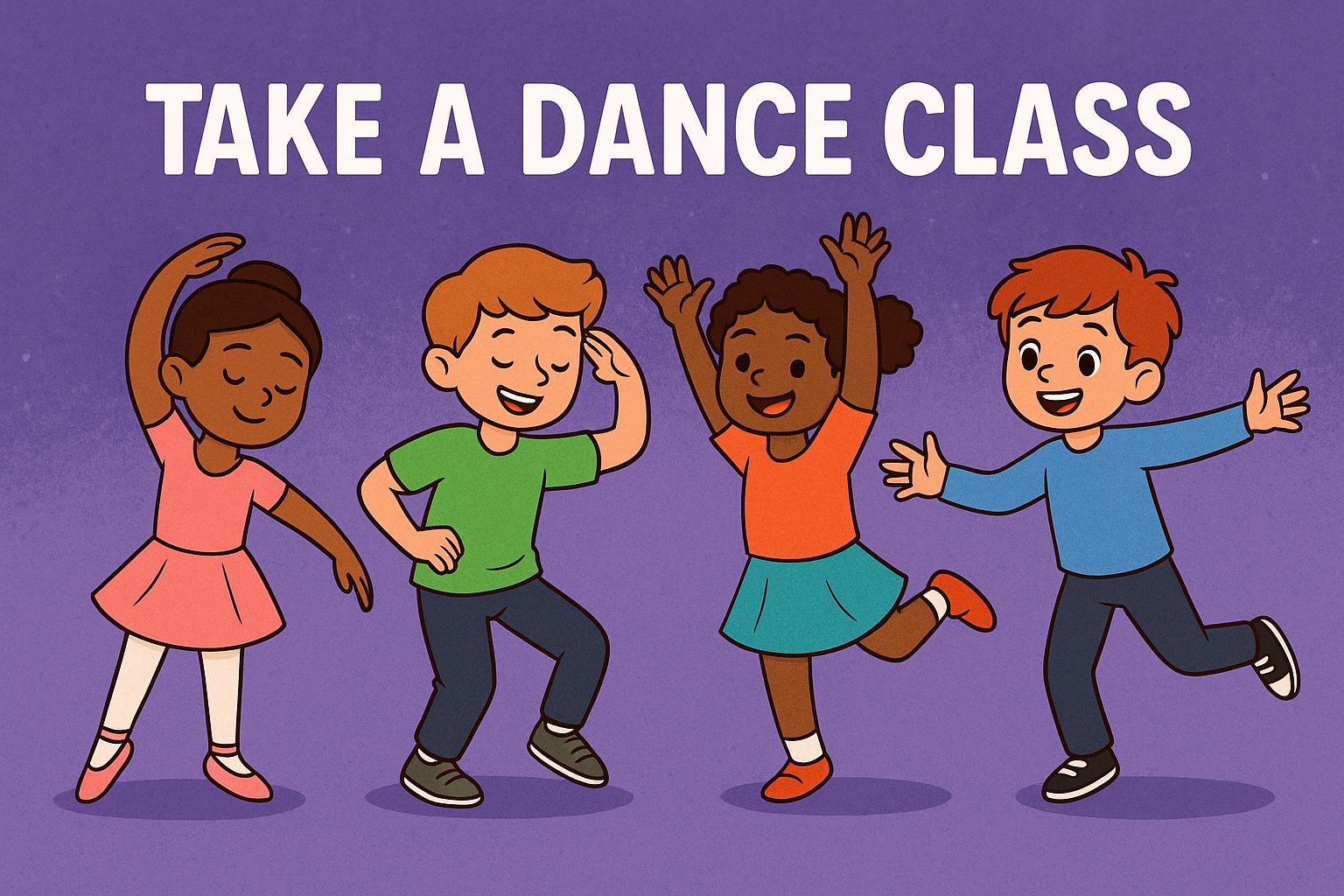Dance classes offer a wonderful mix of rhythm, creativity and physical activity.
Whether children are into high-energy styles like hip hop or prefer the structure of ballet or tap, there’s a dance class to suit every personality and ability level.
Classes usually begin with a warm-up and stretch, followed by age-appropriate routines, games and choreography. Children gain confidence as they learn new moves and may even take part in performances or showcases, depending on the class.
Why It’s Great
- Physical Activity – Builds strength, flexibility, coordination and stamina.
- Confidence & Self-Expression – Encourages creativity and positive self-image through movement.
- Discipline & Listening – Teaches rhythm, timing, and following directions as part of a group.
- Community & Fun – Children enjoy socialising and moving together in a structured but joyful environment.
How to Get Started
- Search online for children’s dance classes near you — look for styles like ballet, street, tap, or creative movement.
- Check local leisure centres, community halls, and performing arts schools.
- Many clubs offer a trial class or beginner course to get started.
- Children usually wear a dance outfit or comfy clothes with non-slip shoes — uniforms may be introduced later.
Variations
- Creative Movement: For toddlers and preschoolers — focus is on playful movement and body awareness.
- Performance Groups: Older children might take part in recitals, shows or competitions.
- Inclusive Classes: Some studios offer SEN-friendly dance classes with adapted routines and sensory-friendly spaces.
Safety Tips
- Ensure classes are taught by qualified instructors in a safe, supervised environment.
- Proper warm-up and cool-down routines help reduce injury risks.
- Dance floors should be slip-resistant and appropriate for the style being taught.


Leave a Reply